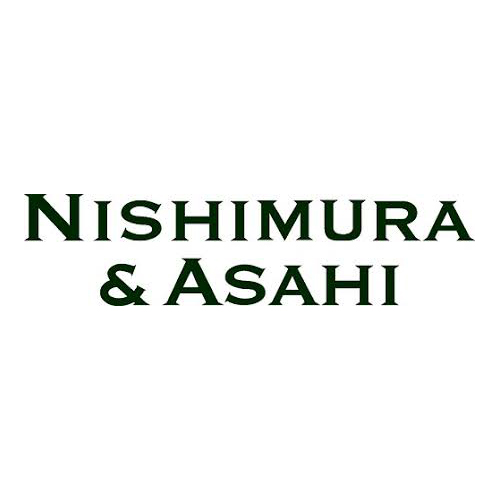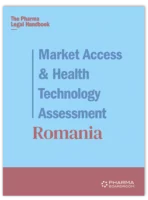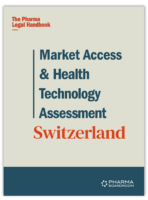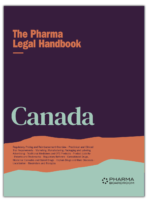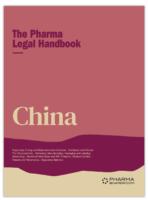Regulatory, Pricing and Reimbursement
Nishimura & Asahi / Japan
An intro to the legal situation for regulatory, pricing and reimbursement in Japan. Prepared in association with Nishimura & Asahi, a leading law firm in Japan, this is an extract from The Pharma Legal Handbook: Japan, available to purchase here for GBP 149.
1. What are the regulatory authorities with jurisdiction over drugs, biologicals, and medical devices in your country?
The Ministry of Health, Labour and Welfare (the “MHLW”) and the Pharmaceuticals and Medical Devices Agency (the “PMDA”).
2. What is the regulatory framework for the authorization, pricing, and reimbursement of drugs, biologicals, and medical devices?
Authorization is governed by the Pharmaceuticals and Medical Devices Law (the “PMD Act”) of Japan.
Pricing of drugs and biologicals is governed by the National Health Insurance. Drug Pricing Standards are established by the MHLW under the Health Insurance Act. The method of calculation of drug pricing and the price of each drug are announced by the MHLW after consultation with the Central Social Insurance Medical Council.
Pricing of medical devices is included in the Medical Fee, which is also established by the MHLW under the Health Insurance Act, and the calculation method and price thereof are announced by the MHLW after consultation with the Central Social Insurance Medical Council.
Reimbursement is governed by the Health Insurance Act.
3. What are the steps to obtain authorization to develop, test, and market a product?
To develop and test a product, it is necessary to obtain a manufacturing/marketing business license depending on the type of business.
To market a product, in addition to the above, the license holder must obtain marketing authorization for each product.
4. What are the approximate fees for each authorization?
The fee for a manufacturing/marketing license varies depending on the type of license, but is approximately 100,000 to 150,000 yen. The fee for marketing authorization for each product varies depending on the product.
5. For how long are marketing authorizations/registrations valid? How are marketing authorizations/registrations renewed?
Manufacturing/marketing licenses are valid for five years, and the license holder must renew the relevant license(s) every five years. Marketing authorizations are valid until and unless withdrawn by the government for appropriate reasons or abandoned by the authorization holder, both of which are rare.
6. How does the authorization process differ between brand-name products and generic products? Are there differences for local manufacturers versus foreign-owned manufacturers?
Clinical trial data is required to obtain authorization for brand-name products. Normally, product creators spend more than 10 years from basic research to obtaining authorization.
For generic products, only stability tests and bioequivalence tests are required, as opposed to clinical trials. Thus, generic products can obtain authorization in a short time, normally 2 years from the start of testing. Currently, applications for authorization of generic products are accepted only twice a year, in February and August.
7. How are combination products (drug + drug, drug + biologic, drug + device, biologic + device, drug + biologic + device) regulated?
Basically, the same rules apply to combination products. To ensure the safety of combination products, the single drugs used in combination products must be in the market for one year or more, with exceptions for some special combination products (such as HIV drugs).
8. How is compliance with regulation monitored and evaluated? Is the regulatory regime comparable with the U.S. Food and Drug Administration or the European Medicines Agency expectations and requirements?
Compliance with regulations is monitored and evaluated by the PMDA and the local government of each prefecture. Basically, compliance with regulations is harmonized with the FDA and EMA.
9. What is the potential range of penalties for noncompliance?
Potential penalties include suspension of part or all of a business, cancellation of authorizations, or up to 3 years imprisonment or a fine of up to 3 million yen or both, depending on the type of noncompliance/misconduct.
10. Is there a national healthcare system? If so, how is it administered and funded?
There is a national healthcare system. Japan’s universal insurance system began with introduction of the Health Insurance Act in 1961. This system ensures that all people’s healthcare costs are covered by public insurance and that people have free access to any healthcare provider. People have to pay insurance fees to the health insurance program they join, and then, when the individual goes to a healthcare provider, the cost is covered by the National Health Insurance (other than a portion the individual patient must pay). The portion an individual must pay varies from 10% to 30% depending on the individual’s age; in addition, if an individual’s total payments exceed a certain amount, which is decided based on his or her income, the residual amount is covered by the National Health Insurance.
People have an obligation to join a health insurance program. Company employees join the health insurance program their employer has joined. Most other people join the national health insurance program, although there are also several special insurance programs such as the public employee union program.
The national healthcare system is funded primarily by insurance fees paid by the program members. For example, a company employee has an obligation to pay half of his/her insurance fee to the insurance program; the other half is paid by the employer. However, current healthcare costs are far beyond the total of insurance fees. Thus, there is an added public expense. Most recently, approximately one half of the total healthcare costs was covered by insurance fees, approximately 40% was covered as a public expense, and approximately 10% was covered by individual payment by the patients.
11. How does the government (or public) healthcare system function with private sector healthcare?
Most of the hospitals in Japan belong to the private sector (approximately 80%).
The basic functions of public sector and private sector hospitals are the same, but public sector providers have special missions, such as providing healthcare in remote places where no other hospitals exist, assisting patients as a safety net, and providing advanced healthcare based on advanced research and study.
12. Are prices of drugs and devices regulated and, if so, how?
Prices of drugs and devices are regulated under the Health Insurance Act.
Pricing of drugs and biologicals is governed by the National Health Insurance Drug Pricing Standard which is regulated by the MHLW under the Health Insurance Act. The methods of calculation of drug pricing and the prices for each drug are announced by the MHLW after consultation with the Central Social Insurance Medical Council.
The pricing of medical devices is included in the Medical Fee, which is also regulated by the MHLW under the Health Insurance Act, and the calculation methods and prices thereof are announced by the MHLW after consultation with the Central Social Insurance Medical Council.
13. How are drugs and devices used by patients paid for? What roles do public and private payers play?
Drugs and devices prescribed by doctors and used by patients are covered by the National Health Insurance, other than the portion individual patients must pay under the Health Insurance Act.
14. Who dispenses drugs and devices to patients and how are those dispensers compensated?
Doctors prescribe the drugs and pharmacies dispense the drugs to patients. When a pharmacy dispenses a prescribed drug, the patient has to pay a portion of the total cost, and the other portion is reimbursed to the pharmacy by the National Health Insurance payer.
The cost of devices used by doctors for patients is reimbursed to the doctor by the National Health Insurance payer. Patients only pay the hospital a portion of the doctor fees, including service fees.
15. What are the professional and legal responsibilities of those who dispense drugs and devices? What role do they play in providing patient care, information, and safety?
Under the Health Insurance Act, a doctor must register as an insurance doctor. Only registered insurance doctors can prescribe drugs and dispense devices covered under the national insurance system.
Also, only a pharmacy that is designated as an insurance pharmacy under the Health Insurance Act can dispense drugs.
Insurance doctors and insurance pharmacies have obligations under the Health Insurance Act, and non-compliance may result in cancellation of their licenses.





